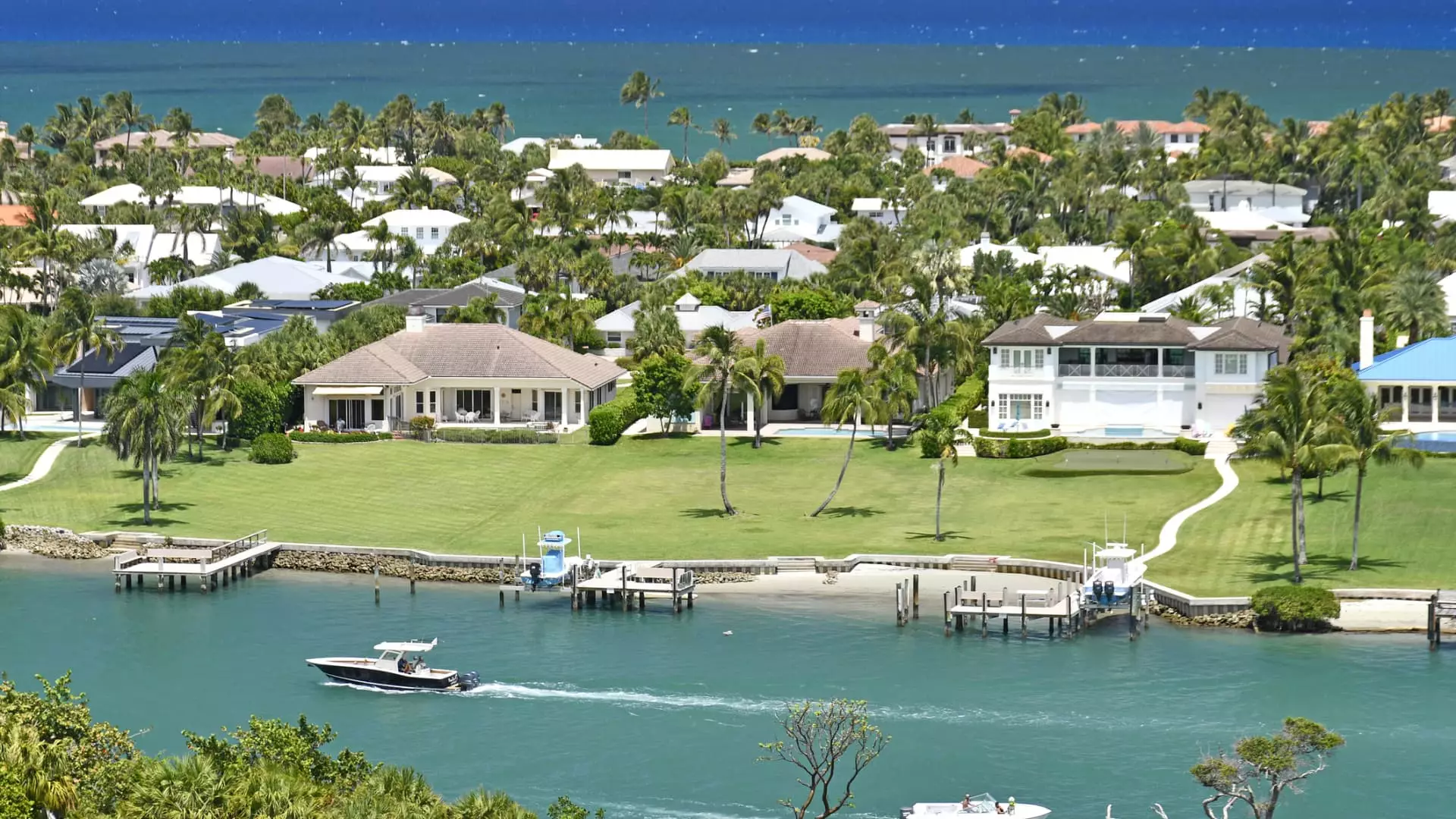The luxury real estate landscape in 2025 is revealing a striking bifurcation driven by economic uncertainty and soaring interest rates. This division pits the ultra-wealthy—those boasting fortunes north of $30 million—against the merely affluent, creating an imbalance that signals broader truths about wealth concentration and market resilience. While anxiety grips much of the market, the ultra-rich are doubling down, leveraging cash offers to snap up high-end properties with a swift decisiveness that their less wealthy counterparts can no longer match. This dynamic not only shapes who controls luxury homes but also amplifies the socio-economic stratification fueling our current economic discourse.
Cash Is King: The Privilege and Power of Liquidity
One of the most revealing features of this divide is the dramatic increase in all-cash purchases among ultra-wealthy buyers. Unlike their affluent peers who hesitate at high borrowing costs, the super-rich are often exempt from such constraints, using liquidity as a weapon to negotiate and secure premium real estate swiftly. Coldwell Banker’s research affirmatively notes that over half of luxury agents observed a rise in cash transactions in early 2025—a testament to cash’s potency as a tool that confers speed, control, and security. Elevated interest rates mean that carrying debt becomes less appealing, but for cash-rich buyers, this is a non-issue. Their ability to bypass finance entirely reinforces existing wealth advantages, a fact that merits critical reflection on the broader consequences for market fairness and access.
Interest Rates and the Sting for the Affluent but Not Ultra-Wealthy
Conversely, the affluent consumers who do not sit on multi-millions feel the crunch of increased borrowing costs acutely. Their caution manifests in slower purchasing decisions, price negotiations, and even the shelving of buying plans. The market’s demand curve here is far more elastic, responding sensitively to macroeconomic signals like stock market dips and the tightening monetary environment. Higher mortgage rates directly diminish their purchasing power, pushing them toward more conservative strategies or compelling them to wait out uncertainty. The sharp decrease in attached property sales—plummeting over 21% year-over-year as reported—underscores this hesitancy in more modest luxury segments, traditionally attractive to the upper-middle class stretching their budgets.
Real Estate as a Hedging Instrument: Rational Yet Unequal
Real estate’s allure as a hedge against inflation and economic volatility stands reaffirmed, especially among high-net-worth individuals seeking stability amid uncertain markets. As a tangible asset, property offers a bulwark against inflationary erosion and stock market gyrations—a feature often underplayed in popular economic narratives but crucial in wealth preservation strategies. Nevertheless, this view must reckon with the uneven capacity to capitalize on such instruments. The ultra-rich can institutionalize real estate as a core wealth-building strategy, continuously acquiring and upgrading, while the less wealthy face barriers that restrict their ability to do the same. This perpetuates an entrenchment of inequality under the guise of prudent financial stewardship.
The Rise of Sophisticated Buyer Expectations Signals a New Era
Interestingly, amid these financial undercurrents, buyers across the luxury spectrum are evolving in taste and discernment. Today’s purchasers—first-timers included—are demanding state-of-the-art technology, premium amenities, and integrated indoor-outdoor experiences. This trend reflects not just a quest for comfort but also a cultural shift in defining luxury living. High-end buyers seek not merely shelter but ecosystemic environments that cater to wellness, sustainability, and connectivity. This raises the bar for developers and sellers, ultimately reshaping the luxury real estate market’s blueprint. However, it also further delineates those who can afford to meet these elevated standards from buyers sidelined by financial and market restrictions.
Market Cycles and the Illusion of Accessibility
While luxury home sales have overall increased during the early months of 2025, volatility remains palpable, with a notable dip following stock market contractions in April. Such turbulence underscores the cyclical nature of real estate and the influence of correlated economic sectors. The cautious price reductions reported by agents further illustrate a recalibration of expectations on both sides of the transaction table. Yet this market turbulence carries an implicit warning: even luxury real estate is not immune to economic headwinds, but the degree of impact varies widely by wealth tier. Rather than signaling a democratization of opportunity, these fluctuations highlight the market’s dual-speed reality—ultimately rewarding those with capital flexibility and punishing those who lack it.
In this complex interplay, luxury real estate is less an asset class and more a mirror reflecting the inequalities baked into capitalist economies. The ultra-wealthy, wielding liquidity as a competitive advantage, deepen their holdings, while the merely wealthy navigate a constricted market landscape increasingly tilted against them. This undeniable truth transforms the discourse around housing, investment, and wealth accumulation from one of opportunity to one of power consolidation.

